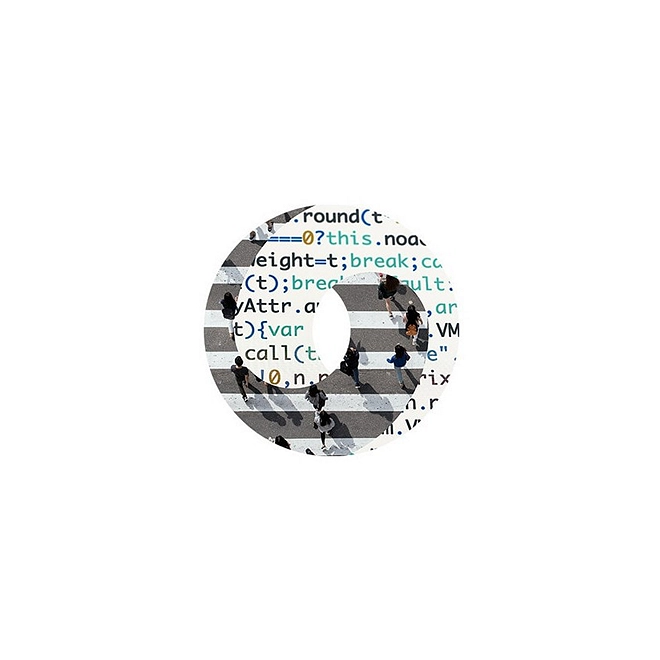Push to value nature as a trillion dollar asset class
Newsroom | Content Partnership
With global economic output hinging on the health of environmental resources, a Deloitte report explains how to make the trade-off clear for decision makers in the private sector and governments.
The original article was written by Jean Bell, Newsroom
As climate change spurs on an urgent biodiversity crisis and environmental woes, the business case for investing in natural capital is stronger than ever before, according to a new report.
Deloitte's Banking on Natural Capital outlines the economic case for investing in natural assets, building on the foundation of the carbon market, the growth of sustainable finance and the emergence of payments for ecosystem services.
According to the publication, investing in nature means committing resources towards the conservation, sustainable management, and restoration of natural capital to ensure nature continues to pay returns in perpetuity.
This is not a wishy-washy nice-to-have, but rather a necessity. The World Economic Forum estimates more than half of the world’s economic output – a whopping US$44 trillion – is moderately or highly dependent on nature. This makes the cost of withdrawing too many natural reserves and investing too little in their replenishment a painful prospect.
The costs are already beginning to add up, with the the predicted finance required for biodiversity conservation alone is estimated at US$722 to $967 billion annually by 2030.
According to Deloitte’s report, this is markedly higher than the estimated US$124 to $143 billion in biodiversity finance committed in 2019. This disparity between the required and committed financing for biodiversity suggests a minimum nature financing gap of US$598 billion annually.
“Nature has value, which if it's eroded or not properly reflected in account and business management, can fall out of the books."
– Guy Williams, Deloitte
Deloitte's Asia Pacific and global nature lead Guy Williams, the report's lead author, thinks the first step is for nature to be viewed as an asset class, just like other financial capital.
“Nature has value, which if it's eroded or not properly reflected in account and business management, can fall out of the books. We can lose that value and it won't be available for us to improve, appreciate and invest in.”
“We see the role of the finance sector and emerging environmental markets that mirror existing capital markets as a really good way to get really large, at scale interest in investment into nature.”
Lee Gray, Deloitte partner and national Māori services lead, says investing in natural capital fits in with the intergenerational, long-term lens of te ao Māori worldviews.
This includes the philosophy that humans don’t own land. Instead, we need to act as kaitiaki (guardians), protecting the land and holding the responsibility to pass it onto the next generation.
The environment also has its own mauri, or life force, which can’t be separated from our own personal well-being and life sustenance.
“The concept of ownership and not recognising the environment as its own living being creates these intergenerational [climate change and environmental] issues that we’re now facing,” he says.
"This makes the trade-off clear for decision makers in the private sector and governments on what value the project delivers.”
– Lee Gray, Deloitte
Gray says there's contradiction in the financial infrastructure in New Zealand, including venture capital, financial reporting standards and the publicly listed market, which is focused and structured on a financial return on investments measured on a year-by-year period.
“This infrastructure obviously doesn’t match well with this philosophical belief that we have in Te Ao Māori, because it's very much based on a ‘what's in it for me’ mindset.”
He says there’s a challenge of creating financial infrastructure that’s entrenched in indigenous concepts and compatible with Te Ao Maori.
“That’s creating a system that puts a higher value on environmentally sustainable, restorative projects that create intergenerational benefits, rating them higher than short term, potentially environmentally damaging projects. This makes the trade-off clear for decision makers in the private sector and governments on what value the project delivers.”
For example, Guy Williams says one mechanism that should be scaled up is the clear nature-performance KPIs on financial sustainability linked loans.
“When there’s any kind of loan, whether buying a new house or a tractor for your farm, we need to build an agreed set of indicators or KPIs or measures of how that's delivering a positive outcome for nature.”
One organisation that is dipping its toe into natural capital is Ekos, an environmental finance service provider that focuses on market-based mechanisms for nature-based solutions.
Among Ekos’ offerings is a ‘Sustainable Development Units Programme’ launched earlier this year. The first transaction involved biodiversity units between Sanctuary Mountain Maungatautari, a Waikato mainland ecological island, and window supplier company, Profile Group Ltd.
Recognised as a reserve more than 100 years ago, Sancturary Mountain Maungatautari is a 3363 area of land totally surrounded by a 47km long pest-proof fence. All mammals have been removed from the island to provide a safe environment for many of New Zealand’s most endangered species. These include native bird species such as brown kiwi to reptiles and insects like tuatara, and giant weta.
The Maungatautari Ecological Island Trust was formed in 2001 when local iwi, land-owners, and residents teamed up to restore and protect the area. According to the sanctuary, the functioning ancient ecosystem is as close to the pre-human Aotearoa environment as it’s possible to find, providing an example of what’s possible if Predator Free 2050 is successful.
The sanctuary has to fundraise each year to hit its annual operating budget of about $2 million, which is typically sourced from ecotourism visitor revenue, philanthropy, grants, and partnerships.
Profile Group has committed about $50,000 per year for each of the 2022 to 2025 financial years. The biodiversity market unit price is calculated at the amount it costs to manage the conservation and upkeep of each hectare of land, wth the company purchasing around 83 units valued at about $603 each that will fund the conservation management of 83 hectares.
Sean Weaver, the chief executive of Ekos, says the new biodiversity market aim is to make corporate social responsibility easy. He describes the biodiversity market as a a shop of sorts, where a corporate can waltz in and see what projects are on offer to invest in, instead of having to do all that leg work themselves.
“We don't want somebody who's causing a whole lot of damage in one area to think, ‘Oh well I’ll just buy these units over here and fix it’. It is available for people who just simply want to cause good as a corporate citizen or an individual,” he says.
“It’s a structured form of philanthropy.”
The deal between Profile Group and the sanctuary is a mutually beneficial one – the company is able to deliver on its business responsibility and reduction impact goals, while the reserve gets valuable financial support to continue its work.
Weavers says the biodiversity units are not a carbon offset process. Rather, the unit facilitates the biodiversity conservation management of an area of the forest, with the idea that conservation financing can be transformed by embedding a small slice of good into a range of different value chains.
“The challenge ahead of us is way more expensive than the taxpayer, globally or domestically, can afford."
– Sean Weaver, Ekos
There’s no benchmark cost for the units, like in the carbon market. It's priced on the real amount cost of the natural asset, such as running the sanctuary. The unit can also adjusted or reduced into smaller slices – ‘micro units’, Weaver calls them – and applied to goods from transportation services to a cup of coffee.
“Any value chain that exists can potentially have a little slice of good embedded into it,” Weaver says.
“This will raise the unit price of that good or service only slightly, and yet it could raise an awful lot of revenue to enable the private sector to get on and fix planet without having to wait for governments to provide that leadership, but its also not asking the taxpayer to fund it.
“The challenge ahead of us is way more expensive than the taxpayer, globally or domestically, can afford when it comes to climate change action and solving the biodiversity crisis.”




